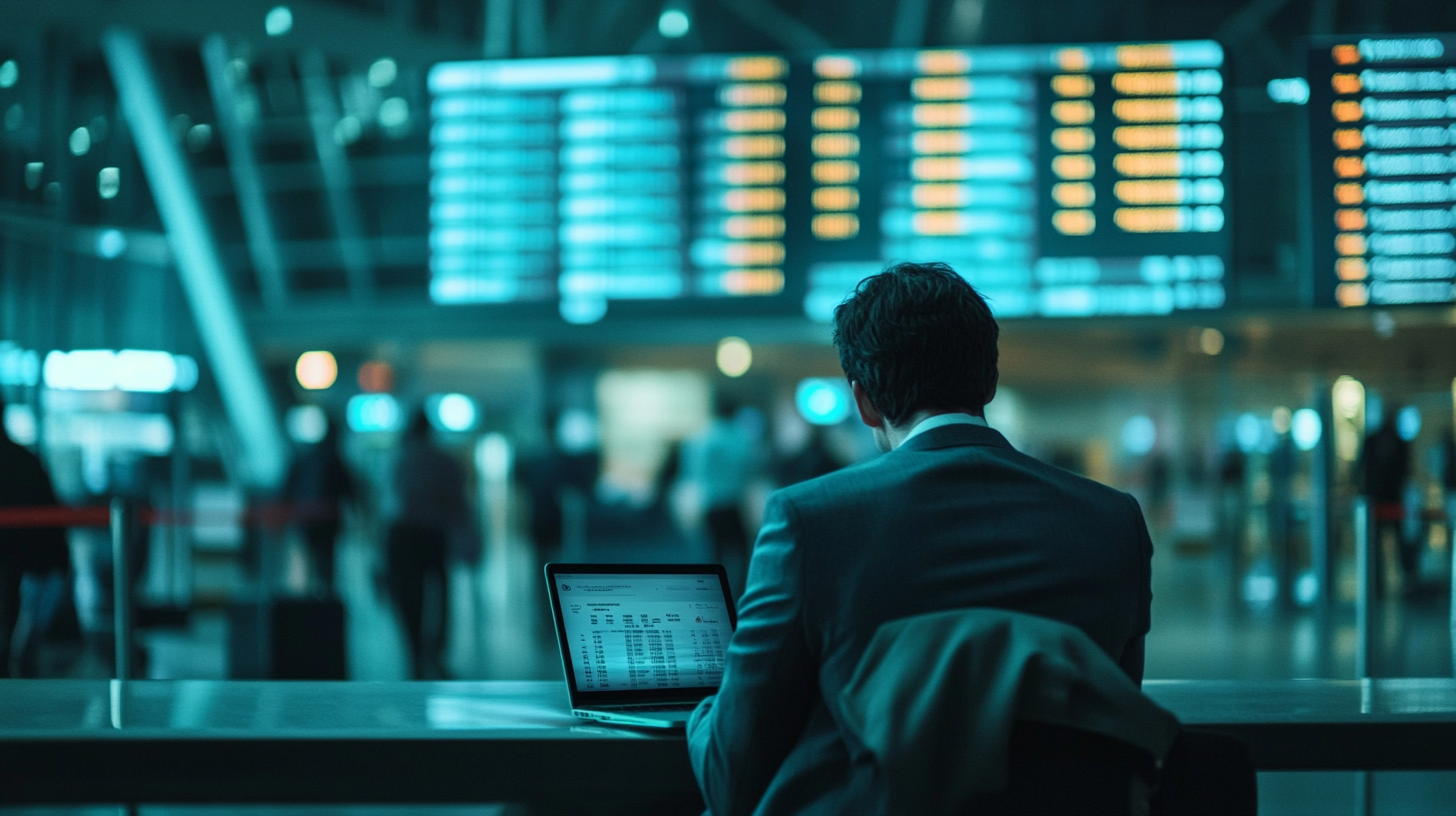The Ultimate Business Travel Playbook

I’ve noticed that business travel becomes far more manageable when approached in distinct phases—before, during, and after your trip. One guide I came across, last updated on March 18, 2024 and coauthored by a retired corporate executive, earned praise from tens of thousands of readers for breaking travel down into these clear stages. I’ve tried a similar approach in my own work-related journeys, and it truly makes all the difference in reducing stress while maximizing efficiency.
In 2025, it’s clear more people are blending remote teamwork with in-person networking, so travel is still a valued asset for building connections and striking key deals. Whether coordinating a global conference or tackling a short roadshow across state lines, laying out a well-rounded plan can keep your budget—and your peace of mind—intact.
1. Set Objectives and Budget

Every business trip should start with clear objectives that define what you hope to accomplish, whether that’s forging new partnerships or sealing a major contract. I like to jot down specific targets—such as the number of client meetings to attend or the project milestones to finalize—so I can structure my time effectively. According to a 2024 Deloitte Corporate Travel Survey, around 76% of professionals see formal goals as a key factor in minimizing wasted resources on the road.
Once I’ve outlined my goals, I make sure to lock in a practical budget. This often means forecasting airfare, accommodations, and ground transportation costs based on current industry rates. I’ve also observed that companies with a transparent approval process are more successful at preventing last-minute spending spikes. Keeping your expenses aligned with your company’s travel policy can help ensure you don’t blow through your allocated funds.
Another tip I’ve found useful is to periodically revisit your budget as your trip nears. Prices can change overnight, so you’ll want to stay flexible yet firm about your bottom line, ensuring you get the most out of your travel investment.
2. Create a Detailed Itinerary

An organized schedule is the backbone of a productive trip. I’ve made it a habit to use digital planning tools—like specialized apps or cloud-based spreadsheets—to keep client meeting times, flight numbers, and hotel check-in details in one central spot. A recent study suggests that professionals who rely on a single, comprehensive itinerary reduce the risk of missed appointments by 40%.
Building in some padding between events is crucial. You never know when a meeting might run long or travel time might be longer than anticipated. I’ve also found that color-coding my itinerary helps me focus on the most critical engagements of the day—like keynote speeches, high-stakes presentations, and panel discussions.
Templates sourced from experienced executive assistants can be a goldmine—customize these to your own travel style. I like to add notes on local customs or special dress codes, especially if I’m visiting a region where business etiquette might differ from my usual practice. This extra layer of detail often impresses hosts and clients alike.
3. Book Early and Explore Corporate Rates

Reserving flights, hotels, and car rentals well in advance not only secures better deals but also reduces the risk of schedule conflicts down the line. In my experience, booking at least four to six weeks ahead can curb costs by up to 20%. Keep your eyes peeled for any corporate rates or negotiated discounts your company may have—these deals can extend to various global hotel chains and airlines.
Industry data from 2023 shows that flexible booking options and robust cancellation policies can save a traveler an average of $200 in change fees. I like to skim each airline’s conditions before finalizing my tickets, making sure I’m covered if a last-minute venue change arises. Add in perks like TSA PreCheck or Global Entry for an even smoother experience, especially if you travel frequently.
Lastly, consider signing up for loyalty programs or travel memberships if you haven’t already. Many of them offer elite-tier benefits, such as priority boarding or complimentary upgrades. These perks can shorten wait times and minimize the hassle of navigating busy airports, which is well worth the effort.
4. Keep Track of Expenses

Expense management is a skill that can save you countless headaches—and dollars. I use a dedicated app to record all my transactions, from airport parking fees to impromptu client dinners. The immediate logging of expenses provides a clear overview of my spending, helping me avoid tricky reimbursement issues.
According to a 2023 survey by a major accounting firm, roughly 35% of workers admit to losing receipts or misreporting costs. That’s why I advocate setting up real-time expense alerts through corporate-friendly software. This approach not only enhances compliance but also shows where money is frequently overlooked—making future budgeting more accurate.
I’ve also known colleagues who prefer spreadsheets or specialized travel apps, and honestly, whichever method you choose, consistency is key. Stay vigilant about scanning or photographing receipts to back up your claims. Trust me, the fewer surprises you have during post-trip reconciliations, the better.
5. Stay Prepared for Unexpected Delays

I’ve seen everything from weather-driven flight cancellations to sudden rail strikes, and these curveballs often arrive when you’re pressed for time. Packing a versatile capsule wardrobe—that you can mix and match for both casual coffee meetups and formal boardroom presentations—plays a big role in easing the stress of unanticipated changes.
I also carry backups of essential tech gear: an extra phone charger, spare batteries, and at least one offline copy of any crucial presentation. According to the Forbes Coaches Council, businesses lose thousands of dollars each year to delayed or botched presentations. Avoid that fate by triple-checking your digital assets and having a failsafe in case your luggage takes a detour.
Checking local news for traffic and weather updates is a final must. I sometimes sign up for travel alerts via airline text notifications, which has saved me more than once from a missed flight. Booking an earlier train or flight—even by an hour or two—can be the difference between a smooth arrival and a frazzled, late appearance.
6. Evaluate the Trip After You Return

The moment I’m back home, I make time for a quick debrief with key teammates or managers to analyze the trip’s outcomes. Did I hit my objectives? What could have gone more smoothly? Jotting this down immediately means I capture fresh impressions before the details fade.
Data from a 2024 corporate policy review indicated that companies who systematically gather feedback on their travel experiences are able to fine-tune their travel guidelines by up to 30%. I’ve personally seen how making small tweaks—like selecting better hotels or choosing more direct flight routes—can transform future journeys.
This reflection step isn’t just about finances; it’s also about nurturing relationships. If I made new contacts, I follow up with a personalized email, referencing points from our meeting. Each trip is a learning opportunity, and consistent evaluation ensures I’m always refining my approach.
Final Thoughts

Business travel is still essential in 2025 for cultivating professional relationships and staying competitive in a fast-paced market. By consciously planning before departure, staying flexible during the trip, and reflecting on results afterward, you maximize the real value of your time away from the office. Embrace new tools and strategies, and remember that each business journey offers a collecting of insights that can refine your next adventure.
While budgets and technology may vary by organization, the underlying principles of structured objectives, mindful spending, and on-the-spot adaptability hold true across industries. I firmly believe that a well-crafted travel plan can be your secret weapon to opening doors and forging lasting partnerships.
Amelia Yeaher’s Take
From what I’ve witnessed over the years, a successful work trip is about tapping into both preparedness and curiosity. If you keep an open mind and stay agile in shifting conditions, you’ll discover new possibilities for collaboration and growth that simply can’t be replicated over virtual platforms.
Building a reliable routine for budgeting, scheduling, and reflecting is a testament to your professionalism, but it also reminds me of why in-person interactions remain so compelling. Nothing beats that first-hand sense of place you get when you step off a plane—in my eyes, that’s where real progress has space to flourish.
Seat5A is where you’ll find fresh aviation insights and practical tips to elevate every journey.






